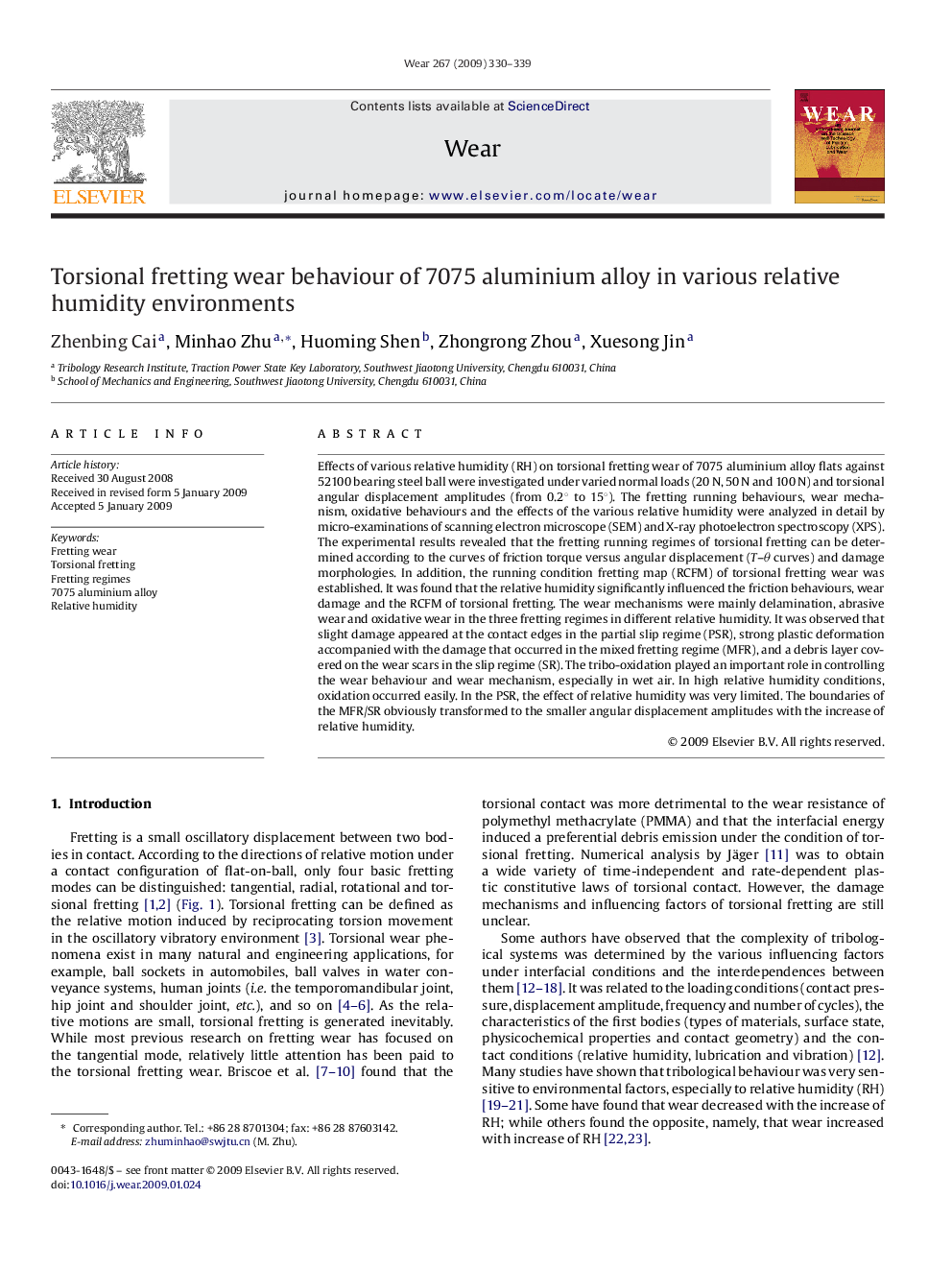| Article ID | Journal | Published Year | Pages | File Type |
|---|---|---|---|---|
| 618737 | Wear | 2009 | 10 Pages |
Abstract
Effects of various relative humidity (RH) on torsional fretting wear of 7075 aluminium alloy flats against 52100 bearing steel ball were investigated under varied normal loads (20 N, 50 N and 100 N) and torsional angular displacement amplitudes (from 0.2° to 15°). The fretting running behaviours, wear mechanism, oxidative behaviours and the effects of the various relative humidity were analyzed in detail by micro-examinations of scanning electron microscope (SEM) and X-ray photoelectron spectroscopy (XPS). The experimental results revealed that the fretting running regimes of torsional fretting can be determined according to the curves of friction torque versus angular displacement (T-θ curves) and damage morphologies. In addition, the running condition fretting map (RCFM) of torsional fretting wear was established. It was found that the relative humidity significantly influenced the friction behaviours, wear damage and the RCFM of torsional fretting. The wear mechanisms were mainly delamination, abrasive wear and oxidative wear in the three fretting regimes in different relative humidity. It was observed that slight damage appeared at the contact edges in the partial slip regime (PSR), strong plastic deformation accompanied with the damage that occurred in the mixed fretting regime (MFR), and a debris layer covered on the wear scars in the slip regime (SR). The tribo-oxidation played an important role in controlling the wear behaviour and wear mechanism, especially in wet air. In high relative humidity conditions, oxidation occurred easily. In the PSR, the effect of relative humidity was very limited. The boundaries of the MFR/SR obviously transformed to the smaller angular displacement amplitudes with the increase of relative humidity.
Related Topics
Physical Sciences and Engineering
Chemical Engineering
Colloid and Surface Chemistry
Authors
Zhenbing Cai, Minhao Zhu, Huoming Shen, Zhongrong Zhou, Xuesong Jin,
